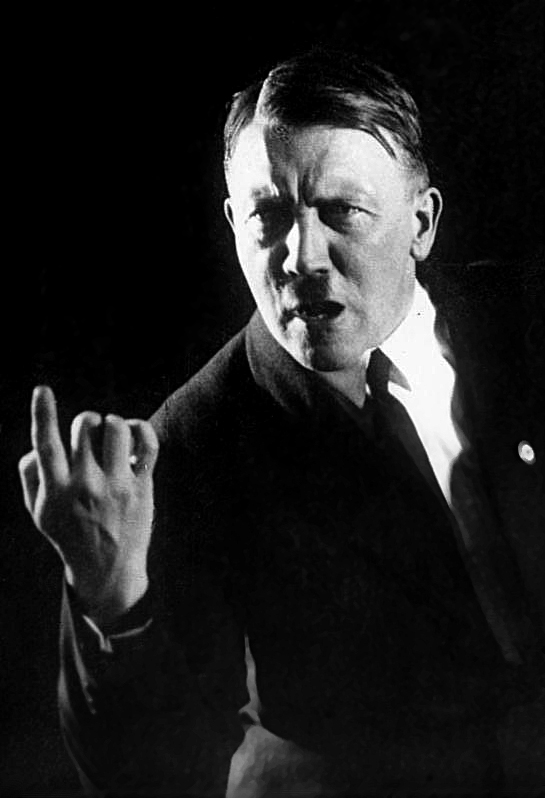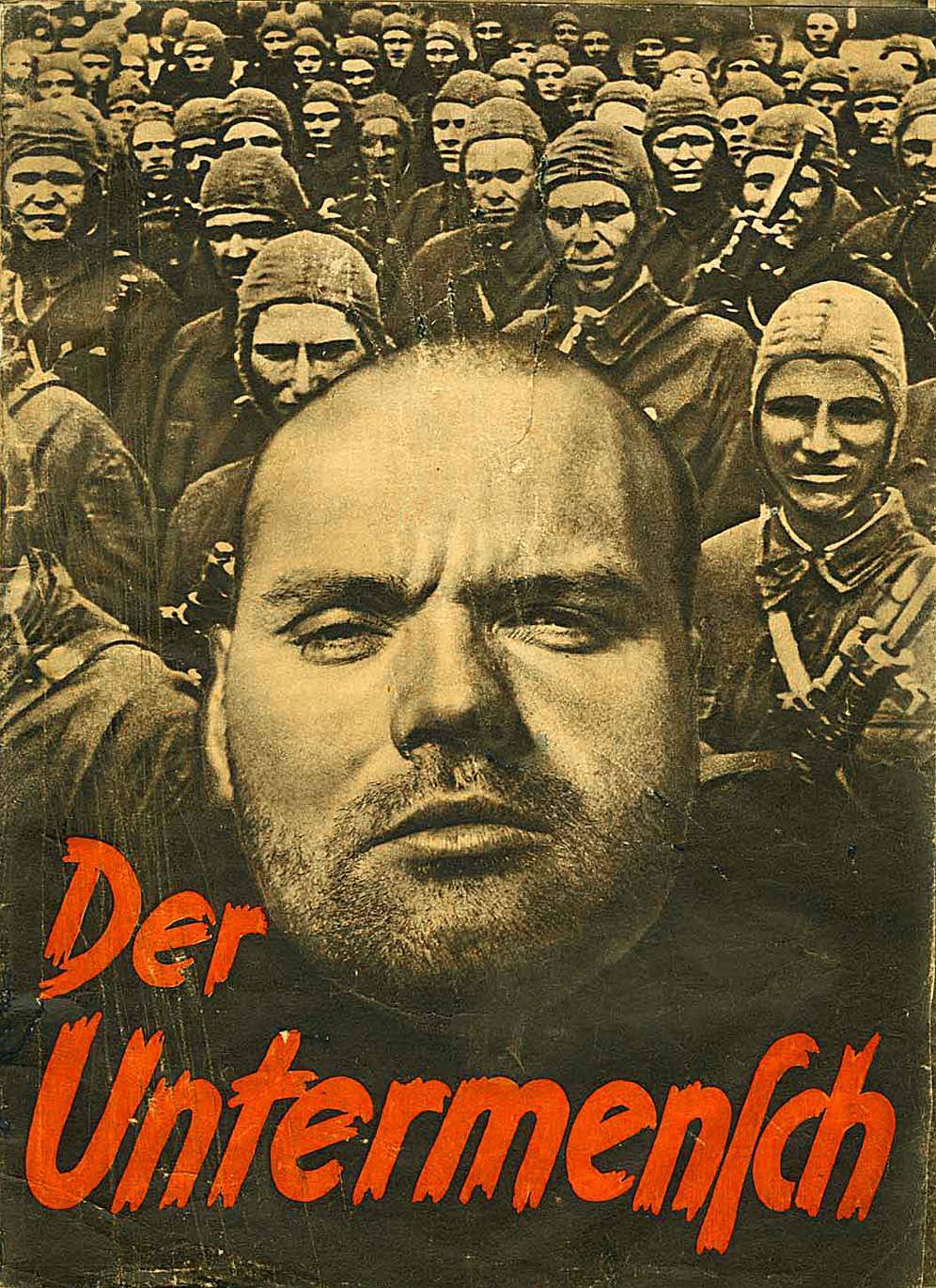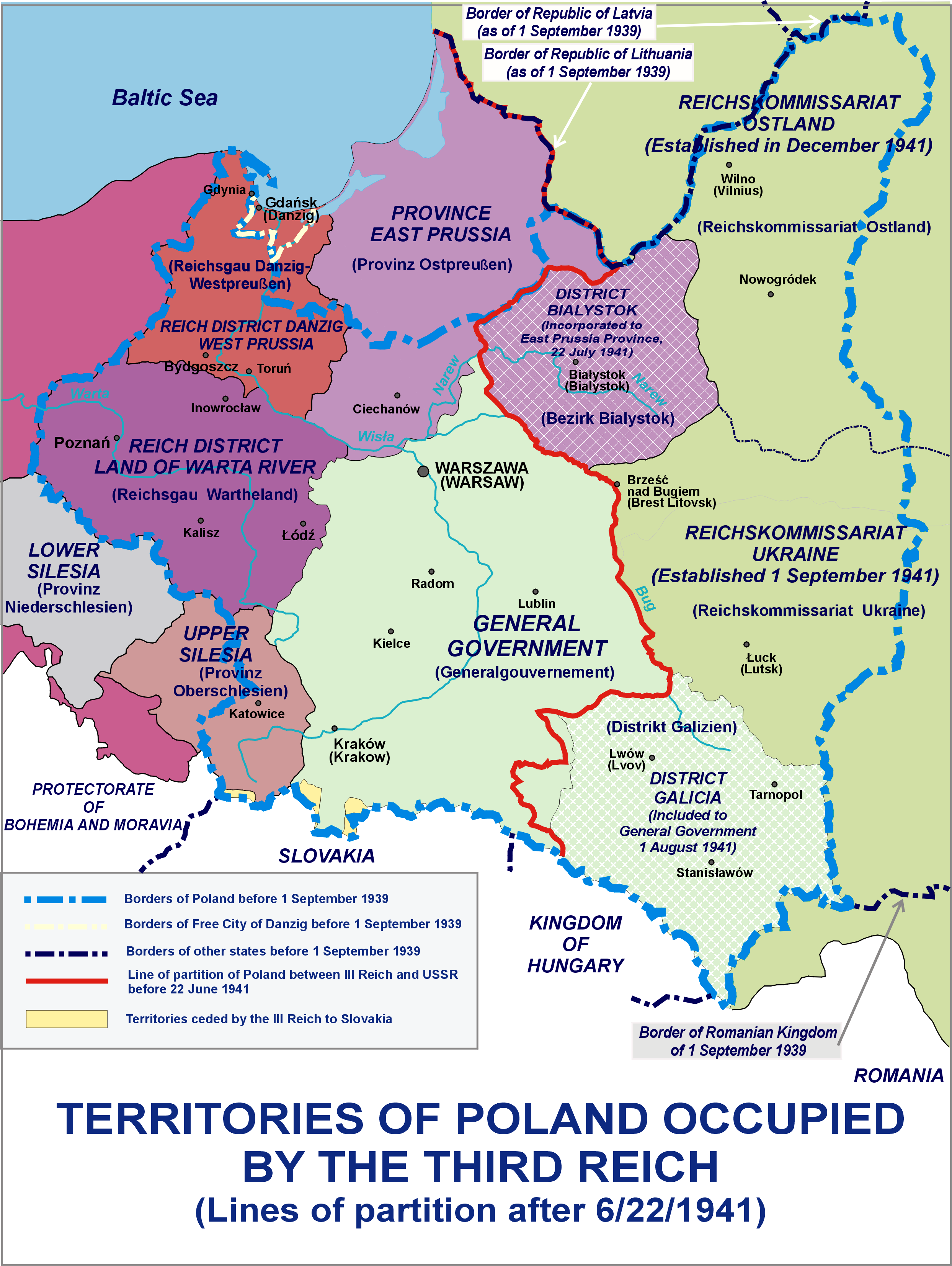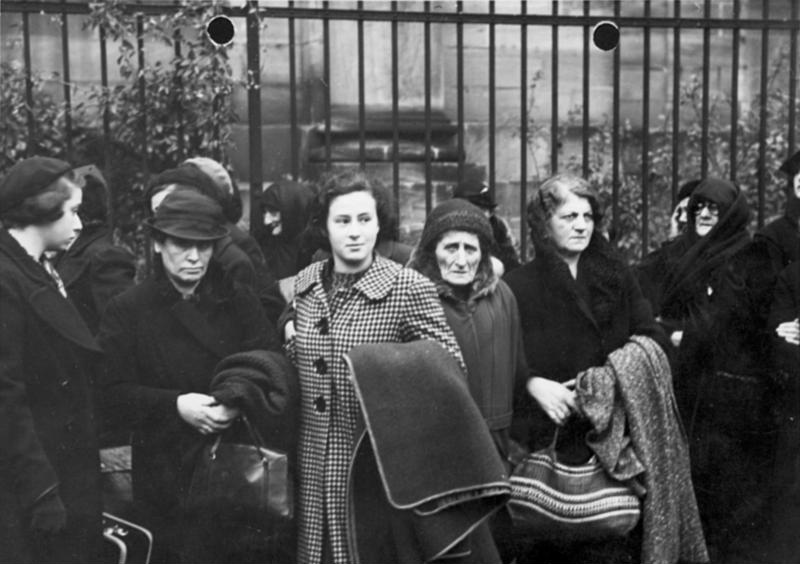|
Ghettos In Nazi-occupied Europe
Beginning with the invasion of Poland during World War II, the Nazi regime set up ghettos across German-occupied Eastern Europe in order to segregate and confine Jews, and sometimes Romani people, into small sections of towns and cities furthering their exploitation. In German documents, and signage at ghetto entrances, the Nazis usually referred to them as ''Jüdischer Wohnbezirk'' or ''Wohngebiet der Juden'', both of which translate as the Jewish Quarter. There were several distinct types including ''open ghettos'', ''closed ghettos'', ''work'', ''transit'', and ''destruction ghettos'', as defined by the Holocaust historians. In a number of cases, they were the place of Jewish underground resistance against the German occupation, known collectively as the ghetto uprisings. Background and establishment of the ghettos The first anti-Jewish measures were enacted in Germany with the onset of Nazism; these measures did not include ghettoizing German Jews: such plans were rejecte ... [...More Info...] [...Related Items...] OR: [Wikipedia] [Google] [Baidu] |
German-occupied Europe
German-occupied Europe refers to the sovereign countries of Europe which were wholly or partly occupied and civil-occupied (including puppet governments) by the military forces and the government of Nazi Germany at various times between 1939 and 1945, during and shortly before World War II, generally administered by the Nazi regime, under the dictatorship of Adolf Hitler.Encyclopædia Britannica German occupied Europe.World War II. Retrieved 1 September 2015 from the Internet Archive. The German Wehrmacht occupied European territory: * as far east as the town of Mozdok in the North Caucasus in the Soviet Union (1942–1943) * as far north as the settlement of Barentsburg in Svalbard in the Kingdom of Norway * as far south as the island of Gavdos in the Kingdom of Greece * as far west as the island of Ushant in the French Republic Outside of Europe proper, German forces effectively controlled areas of North Africa in Egypt, Libya, and Tunisia at times between 1941 and 1943. G ... [...More Info...] [...Related Items...] OR: [Wikipedia] [Google] [Baidu] |
Ghetto Uprising
The ghetto uprisings during World War II were a series of armed revolts against the regime of Nazi Germany between 1941 and 1943 in the newly established Jewish ghettos across Nazi-occupied Europe. Following the German and Soviet invasion of Poland in September 1939, Polish Jews were targeted from the outset. Within months inside occupied Poland, the Germans created hundreds of ghettos in which they forced the Jews to live. The new ghettos were part of the German official policy of removing Jews from public life with the aim of economic exploitation. The combination of excess numbers of inmates, unsanitary conditions and lack of food resulted in a high death rate among them. In most cities the Jewish underground resistance movements developed almost instantly, although ghettoization had severely limited their access to resources. The ghetto fighters took up arms during the most deadly phase of the Holocaust known as Operation Reinhard (launched in 1942), against the Nazi plan ... [...More Info...] [...Related Items...] OR: [Wikipedia] [Google] [Baidu] |
Volksgemeinschaft
''Volksgemeinschaft'' () is a German expression meaning "people's community", "folk community",Richard Grunberger, ''A Social History of the Third Reich'', London: Weidenfeld and Nicolson, 1971, p. 44. "national community", or "racial community", depending on the translation of its component term ''Volk'' (cognate with the English word "folk"). This expression originally became popular during World War I as Germans rallied in support of the war, and many experienced "relief that at one fell swoop all social and political divisions could be solved in the great national equation". The idea of a ''Volksgemeinschaft'' was rooted in the notion of uniting people across class divides to achieve a national purpose,Fritzsche, p. 39. and the hope that national unity would "obliterate all conflicts - between employers and employees, town and countryside, producers and consumers, industry and craft". After Germany's defeat in World War I, the concept of ''Volksgemeinschaft'' remained popular e ... [...More Info...] [...Related Items...] OR: [Wikipedia] [Google] [Baidu] |
Herrenrasse
The master race (german: Herrenrasse) is a pseudoscientific concept in Nazi ideology in which the putative "Aryan race" is deemed the pinnacle of human racial hierarchy. Members were referred to as "''Herrenmenschen''" ("master humans"). The Nazi theorist Alfred Rosenberg believed that the "Nordic race" was descended from " Proto-Aryans", who he believed had pre-historically dwelt on the North German Plain and may have ultimately originated on the lost continent of Atlantis. The Nazis declared that the Aryans were superior to all other races, and believed they were entitled to expand territorially. Hitler, Adolf ''Mein Kampf'' 1925 The actual policy that was implemented by the Nazis resulted in the Aryan certificate. This document, which was required by law for all citizens of the Reich, was the "Lesser Aryan certificate" (''Kleiner Ariernachweis'') and could be obtained through an ''Ahnenpass'', which required the owner to trace their lineage through baptism, birth certifi ... [...More Info...] [...Related Items...] OR: [Wikipedia] [Google] [Baidu] |
Aryanism
Aryanism is an ideology of racial supremacy which views the supposed Aryan race as a distinct and superior racial group which is entitled to rule the rest of humanity. Initially promoted by racist theorists such as Arthur de Gobineau and Houston Stewart Chamberlain, Aryanism reached its peak of influence in Nazi Germany. In the 1930s and 40s, the regime applied the ideology with full force, sparking World War II with the 1939 invasion of Poland in pursuit of ''Lebensraum'', or living space, for the Aryan people. The racial policies which were implemented by the Nazis during the 1930s came to a head during their conquest of Europe and the Soviet Union, culminating in the industrial mass murder of six million Jews and eleven million other victims in what is now known as the Holocaust. Background By the late 19th century, a number of later writers, such as the French anthropologist Vacher de Lapouge in his book ''L'Aryen'', argued that this superior branch could be identified ... [...More Info...] [...Related Items...] OR: [Wikipedia] [Google] [Baidu] |
Untermenschen
''Untermensch'' (, ; plural: ''Untermenschen'') is a Nazi term for non-Aryan "inferior people" who were often referred to as "the masses from the East", that is Jews, Roma, and Slavs (mainly ethnic Poles, Serbs, and later also Russians). The term was also applied to mixed race and black people. Jewish, Polish and Romani people, along with the physically and mentally disabled, as well as homosexuals and political dissidents, and on rare instances, POWs from Western Allied armies, were to be exterminated in the Holocaust. According to the ''Generalplan Ost'', the Slavic population of East-Central Europe was to be reduced in part through mass murder in the Holocaust, with a majority expelled to Asia and used as slave labor in the Reich. These concepts were an important part of the Nazi racial policy. Etymology It is widely believed that the term "under man" was coined by the Nazis, but this belief is incorrect because the term "under man" was first used by the American ... [...More Info...] [...Related Items...] OR: [Wikipedia] [Google] [Baidu] |
General Government
The General Government (german: Generalgouvernement, pl, Generalne Gubernatorstwo, uk, Генеральна губернія), also referred to as the General Governorate for the Occupied Polish Region (german: Generalgouvernement für die besetzten polnischen Gebiete), was a German zone of occupation established after the invasion of Poland by Nazi Germany, Slovakia and the Soviet Union in 1939 at the onset of World War II. The newly occupied Second Polish Republic was split into three zones: the General Government in its centre, Polish areas annexed by Nazi Germany in the west, and Polish areas annexed by the Soviet Union in the east. The territory was expanded substantially in 1941, after the German Invasion of the Soviet Union, to include the new District of Galicia. The area of the ''Generalgouvernement'' roughly corresponded with the Austrian part of the Polish–Lithuanian Commonwealth after the Third Partition of Poland in 1795. The basis for the formation of the ... [...More Info...] [...Related Items...] OR: [Wikipedia] [Google] [Baidu] |
Reichsgau Wartheland
The ''Reichsgau Wartheland'' (initially ''Reichsgau Posen'', also: ''Warthegau'') was a Nazi German ''Reichsgau'' formed from parts of Polish territory annexed in 1939 during World War II. It comprised the region of Greater Poland and adjacent areas. Parts of ''Warthegau'' matched the similarly named pre-Versailles Prussian province of Posen. The name was initially derived from the capital city, Posen (Poznań), and later from the main river, Warthe (Warta). During the Partitions of Poland from 1793, the bulk of the area had been annexed by the Kingdom of Prussia until 1807 as South Prussia. From 1815 to 1849, the territory was within the autonomous Grand Duchy of Posen, which was the Province of Posen until Poland was re-established in 1918–1919 following World War I. The area is currently the Greater Poland Voivodeship. Invasion and occupation of Poland After the invasion of Poland, the conquered territory of Greater Poland was split between four ''Reichsgaue'' and th ... [...More Info...] [...Related Items...] OR: [Wikipedia] [Google] [Baidu] |
Expulsion Of Poles By Nazi Germany
The Expulsion of Poles by Nazi Germany during World War II was a massive operation consisting of the forced resettlement of over 1.7 million Poles from the territories of German-occupied Poland, with the aim of their Germanization (see Lebensraum) between 1939 and 1944. The German Government had plans for the extensive colonisation of territories of occupied Poland, which were annexed directly into Nazi Germany in 1939. Eventually these plans grew bigger to include parts of the General Government. The region was to become a "purely German area" within 15–20 years, as explained by Adolf Hitler in March 1941. By that time the General Government was to be cleared of 15 million Polish nationals, and resettled by 4–5 million ethnic Germans. The operation was the culmination of the expulsion of Poles by Germany carried out since the 19th century, when Poland was partitioned among foreign powers including Germany. Racial policies Following the German invasion of the country, ... [...More Info...] [...Related Items...] OR: [Wikipedia] [Google] [Baidu] |
Polish Jews
The history of the Jews in Poland dates back at least 1,000 years. For centuries, Poland was home to the largest and most significant Ashkenazi Jewish community in the world. Poland was a principal center of Jewish culture, because of the long period of statutory religious tolerance and social autonomy which ended after the Partitions of Poland in the 18th century. During World War II there was a nearly complete genocidal destruction of the Polish Jewish community by Nazi Germany and its collaborators of various nationalities, during the German occupation of Poland between 1939 and 1945, called the Holocaust. Since the fall of communism in Poland, there has been a renewed interest in Jewish culture, featuring an annual Jewish Culture Festival, new study programs at Polish secondary schools and universities, and the opening of Warsaw's Museum of the History of Polish Jews. From the founding of the Kingdom of Poland in 1025 until the early years of the Polish–Lithuanian Comm ... [...More Info...] [...Related Items...] OR: [Wikipedia] [Google] [Baidu] |
Polish Second Republic
The Second Polish Republic, at the time officially known as the Republic of Poland, was a country in Central and Eastern Europe that existed between 1918 and 1939. The state was established on 6 November 1918, before the end of the First World War. The Second Republic ceased to exist in 1939, when Poland was invaded by Nazi Germany, the Soviet Union and the Slovak Republic, marking the beginning of the European theatre of the Second World War. In 1938, the Second Republic was the sixth largest country in Europe. According to the 1921 census, the number of inhabitants was 27.2 million. By 1939, just before the outbreak of World War II, this had grown to an estimated 35.1 million. Almost a third of the population came from minority groups: 13.9% Ruthenians; 10% Ashkenazi Jews; 3.1% Belarusians; 2.3% Germans and 3.4% Czechs and Lithuanians. At the same time, a significant number of ethnic Poles lived outside the country's borders. When, after several regional conflicts, the b ... [...More Info...] [...Related Items...] OR: [Wikipedia] [Google] [Baidu] |
Kristallnacht
() or the Night of Broken Glass, also called the November pogrom(s) (german: Novemberpogrome, ), was a pogrom against Jews carried out by the Nazi Party's (SA) paramilitary and (SS) paramilitary forces along with some participation from the Hitler Youth and German civilians throughout Nazi Germany on 9–10 November 1938. The German authorities looked on without intervening.German Mobs' Vengeance on Jews", ''The Daily Telegraph'', 11 November 1938, cited in The name (literally 'Crystal Night') comes from the shards of broken glass that littered the streets after the windows of Jewish-owned stores, buildings and synagogues were smashed. The pretext for the attacks was the assassination of the German diplomat Ernst vom Rath by Herschel Grynszpan, a 17-year-old German-born Polish Jew living in Paris. Jewish homes, hospitals and schools were ransacked as attackers demolished buildings with sledgehammers. Rioters destroyed 267 synagogues throughout Germany, Austria and the ... [...More Info...] [...Related Items...] OR: [Wikipedia] [Google] [Baidu] |











